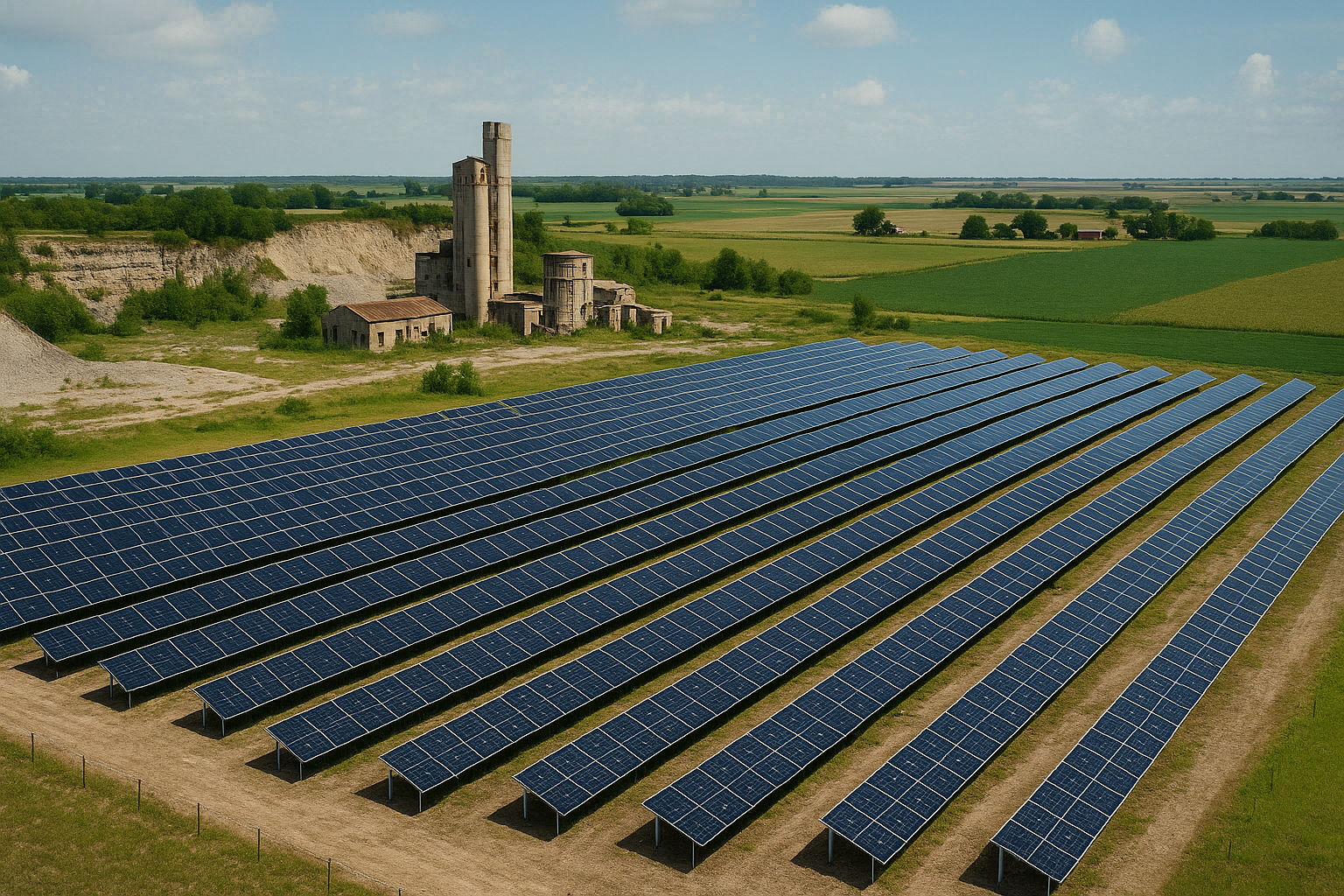
Mason City’s long-shuttered Northwestern States Portland Cement Company site presents a rare opportunity to transform a century-old industrial brownfield into a modern solar farm. Cement manufacturing at this facility began in 1908 and ceased in the fall of 2009, when Holcim mothballed the plant—eliminating 165 jobs but preserving the operating permits and equipment for future use (radioiowa.com). Today, the 150-acre West Quarry and surrounding areas remain largely undeveloped, yet lie within 10 km of existing high-voltage lines along 25th Street NW and U.S. Highway 65 (cumulis.epa.gov).
From Brownfield to Brightfield
Brownfield solar projects—sometimes called “brightfields”—leverage previously industrial land, minimizing conflict with agriculture or sensitive habitats. At Mason City’s cement site, the deep limestone quarry and adjacent flat terrain require minimal grading. The proximity to transmission infrastructure slashes interconnection costs—a common bottleneck for new solar arrays.
Scale and Impact
A 150-acre solar installation can host roughly 20 MW of photovoltaic capacity—enough to power over 4,000 homes. By comparison, Iowa’s average home uses about 10,000 kWh annually. Converting this one site alone could offset over 16,000 tons of CO₂ per year—the equivalent of removing 3,400 cars from the road. Furthermore, construction of the solar farm would spur 75–100 temporary jobs, with 10–15 permanent roles in operations and maintenance.
Community and Economic Benefits
Repurposing the old cement plant aligns with Mason City’s economic diversification goals. Lease payments to local landowners, increased tax revenues, and new workforce training opportunities would help offset the past economic loss when the plant mothballed in 2009. The clean-energy project could also complement nearby agriculture—dual-use agrivoltaic systems could allow limited crop growth under and between panels, preserving the rural landscape.
Policy and Incentives
Iowa law supports net-metering for distributed generation up to 500 kW, and federal Investment Tax Credits (ITC) cover up to 30% of project costs. Local partnerships with utilities—such as the North Iowa Municipal Electric Cooperative—could secure power-purchase agreements, ensuring stable revenue streams for the solar developer.
A Model for Midwestern Redevelopment
Mason City’s cement site isn’t unique—many former industrial properties across the Midwest sit idle, ripe for brightfield conversion. But this site’s size, grid access, and community buy-in make it especially compelling. By leading with solar here, Mason City could become a case study in smart brownfield reuse, economic revitalization, and clean-energy leadership.
Turning Mason City’s dormant cement plant into a solar farm offers a pragmatic win-win: restoring an industrial scar, generating clean electricity, and reinvigorating the local economy. With established transmission lines nearby, supportive state and federal incentives, and clear environmental benefits, this project can illuminate a sustainable path forward—literally and figuratively—for Mason City and other post-industrial communities.
